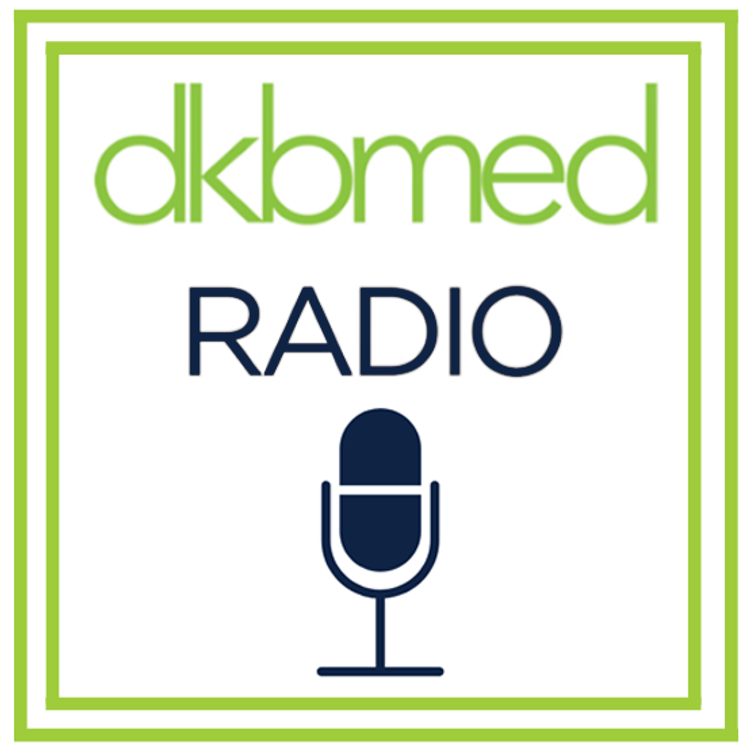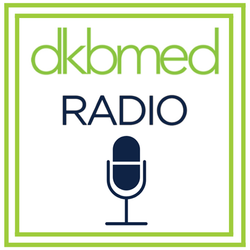Share

DKBmed Radio
MS Risk Factors and Outcomes
•
In her Expert Commentary, Dr. Melanie Ward from West Virginia University’s Rockefeller Neuroscience Institute provided analysis of the newer data describing the modifiable and nonmodifiable risk factors for developing MS and/or increasing the rate of disease progression and disability.
Join us for this podcast as Dr. Ward explains how these findings can affect clinical practice to improve overall care of individuals with MS.
Take our post-test to claim CME credits.
Read this podcast's companion newsletter here.
More episodes
View all episodes

PLWH & SUD: A Clinical Perspective
31:26|The primary health concern for all individuals living with HIV should be managing their disease, particularly maintaining adherence to their ART treatment. Yet for many, the more immediate demands of their substance use disorder — whether for stimulants and/or opioids — take precedence and can readily become the central focus of their lives. What signals can help a clinician recognize a substance use disorder? How can they differentiate a clinical SUD from intermittent (even though harmful) substance use? What evidence-based treatments should they consider?Post-test for CME credits: https://elit.dkbmed.com/issues/217/test
What's New with the Flu? 2024-2025 Respiratory Season Update
56:22|CLAIM CME/CE CREDIT HERE: https://dkbmed.com/programs/209/sections/122/evaluationInfluenza remains a perennial public health threat, and urgent and convenient care providers serve an essential role in treating patients who become infected with the virus. This webinar will help you recognize patients at high risk of severe illness caused by the flu and determine when to use influenza antivirals. Importantly, you will also learn several strategies that can help you avoid inappropriate use of antibiotics. Watch now to enhance your flu season readiness and elevate the care you provide to your patients.Credit available: 1.0 of ANCC, AMA, or AAPA
MS and Family Planning: The Clinician’s Perspective
30:57|Giving birth and raising a family. For many people with MS, the path to achieving those goals contains more questions than answers. Questions about timing — which should come first, pregnancy or disease stability on a DMT? Questions about genetics — can MS be passed on to the baby? Questions about fertility — is in vitro fertilization safe and effective, and how much does it increase disease activity? Questions their treating clinicians may not be able to answer with the most current research.Take our post-test to claim CME credits (https://elit.dkbmed.com/issues/215/test)Read this podcast's companion newsletter here. (https://elit.dkbmed.com/issues/214)
PLWH: Overcoming Post-Incarceration Care Disengagement
20:17|People living with HIV who’ve had criminal legal involvement face significant challenges that complicate their ability to remain in the HIV care continuum. Many, while incarcerated, have stopped treatment, and once back in the community have been reluctant to resume ART. Why? What are the key drivers behind their disengagement from care? What can clinicians do to encourage these patients to return to treatment? What strategies have been tried, and what’s been shown to work? What does the evidence say?Post-test for CME credits: https://elit.dkbmed.com/issues/213/test
Clinical Approaches to MS Fatigue
20:15|In this issue: Fatigue. It’s one of the most common complaints providers hear from their patients with MS. It interferes with virtually every aspect of a patient’s life. What can clinicians do to better identify MS fatigue? And what do they need to know to better provide management effectively tailored to each patient?Take our post-test to claim CME credits (https://elit.dkbmed.com/issues/211/test)Read this podcast's companion newsletter here. (https://elit.dkbmed.com/issues/210)
POMS: A Clinical View
26:02|In this issue: POMS. Pediatric Onset Multiple Sclerosis: children and adolescents with symptoms indicating a diagnosis of multiple sclerosis. Are their presentations different from adult-onset MS? POMS is often associated with higher degrees of activity and inflammation early in the disease. How can clinicians most effectively confirm an early MS diagnosis in these young patients? What does the current evidence show about when to prescribe high-efficacy disease modifying therapies? What activity limitations should be placed on patients with POMS?Take our post-test to claim CME credits (https://elit.dkbmed.com/issues/209/test)Read this podcast's companion newsletter here. (https://elit.dkbmed.com/issues/208)
Managing HIV in an Aging Population
28:21|Widespread use of highly effective ART has increased the life expectancy of people living with HIV (PLWH) to close to that of the general population. But despite highly effective viral suppression, the risks for cardiovascular diseases continue to increase in these individuals. So too do the risks of neurocognitive impairment.Post-test for CME credits: https://elit.dkbmed.com/issues/206/test
Managing HIV Coinfections: HBV and TB
33:44|Current ART regimens can successfully manage HIV infection in nearly all PLWH. But what happens when a patient with HIV is coinfected with a dangerous pathogen ART alone cannot handle? Two of the most common are hepatitis B and latent tuberculosis infection.Post-test for CME credits: https://elit.dkbmed.com/issues/203/test
ART, HRT, Pregnancy, and Menopause in Women Living With HIV
24:45|Pregnancy and menopause — for many women, these are two of the most significant healthcare events in their lives. For WLWH (women living with HIV) and their healthcare providers, managing these life-changing periods is often complicated by many questions.Post-test for CME credits: https://elit.dkbmed.com/issues/201